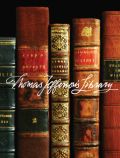

The Library of Congress is the national library of the United States and consists of three buildings in Washington, D.C. The library is the largest in the world and has over 32 million books and 61 million manuscripts in 470 languages.
The library also has a rare book collection, the rough draft of the Declaration of Independence, and one of the four vellum copies of the Gutenberg Bible known to exist. The main building of the Library of Congress, located across from the U.S. Capitol, was built by the U.S. Army Corps of Engineers and opened in 1897. It was named in honor of Thomas Jefferson on June 13, 1980. The architecture of the Library of Congress emphasizes classical Greek style such as Corinthian columns, relief sculpture, and statues of Greek gods. The following photographs show some of the most interesting features of the Thomas Jefferson Building. Click on the images to enlarge them.
The entrance to the library has a fountain called the "Court of Neptune" where Neptune sits in the middle flanked by his sons, the tritons, blowing conch shells like trumpets. On either side of Neptune, nude nymphs ride wild sea horses. The basin of the fountain has four turtles, two frogs, and a sea serpent.
The Jefferson Building is open Monday to Saturday, from 10:00am to 5:00pm. Upon entry and exit, the Library Police inspects all handbags, large envelopes, and briefcases. The Great Hall is an impressive chamber with large archways of sculpted marble. Stairways on the north and south sides of the hall lead to the second floor which has a series of twin columns supporting the roof.
Ornately carved Corinthian columns and archways mark the boundaries of the corridors in the second floor.
The main reading room is used by researchers who need to access the electronic resources in the Computer Catalog Center, to consult the Main Card Catalog, to obtain an orientation to the Library as a whole, or to use some of the more than 70,000 volumes in the Main Reading Room reference collection.
The ceiling of the Great Hall consists of six stained glass panels with a concentric scalloped design of predominant blue hues. The framework supporting the stained glass shows meticulous craftsmanship.
View of the second floor of the Great Hall from the adjoining north gallery. The picture shows a portion of the intricate mosaic floor designs that cover the corridors of the second floor.

Thomas Jefferson's Library
The main building of the Library of Congress is named after Thomas Jefferson
because Jefferson was instrumental in providing a large portion of the books in the library.
During the American Revolution, while he was United States minister to France in the 1780s, Jefferson acquired
thousands of books for his library at Monticello. By 1814, when the British burned the Capitol and the Congressional Library,
Thomas Jefferson had the largest personal collection of books in the United States.
Jefferson offered to sell his personal library to Congress as a replacement for the collection destroyed by the British.
Congress purchased his library for $23,950 in 1815. A second fire on Christmas Eve of 1851 destroyed
approximately two thirds of the 6,487 volumes Congress had purchased from Jefferson, but
the Jefferson books represent the seed from which the present collections of the
Library of Congress grew.
Other Library Exhibits
The Library of Congress has several halls with exhibits such as:
The Bible Collection - A contrast between the Giant Bible of Mainz
that marks the end of the handwritten book, and the Gutenberg Bible that
heralds the explosion of knowledge from the printing press.
Exploring the Early Americas - An examination of the drama of the encounters between Native Americans
and Europeans, and the resulting changes caused by the meeting of the two worlds.
The exhibition includes two extraordinary maps by Martin Waldseemüller created in 1507 and 1516,
which depict a world enlarged by the presence of the Western Hemisphere.
Creating the United States - Insights into how the nation's founding documents were forged
and the role that imagination, vision, collaboration, and compromise played in the
unprecedented formation of a self-governing country.